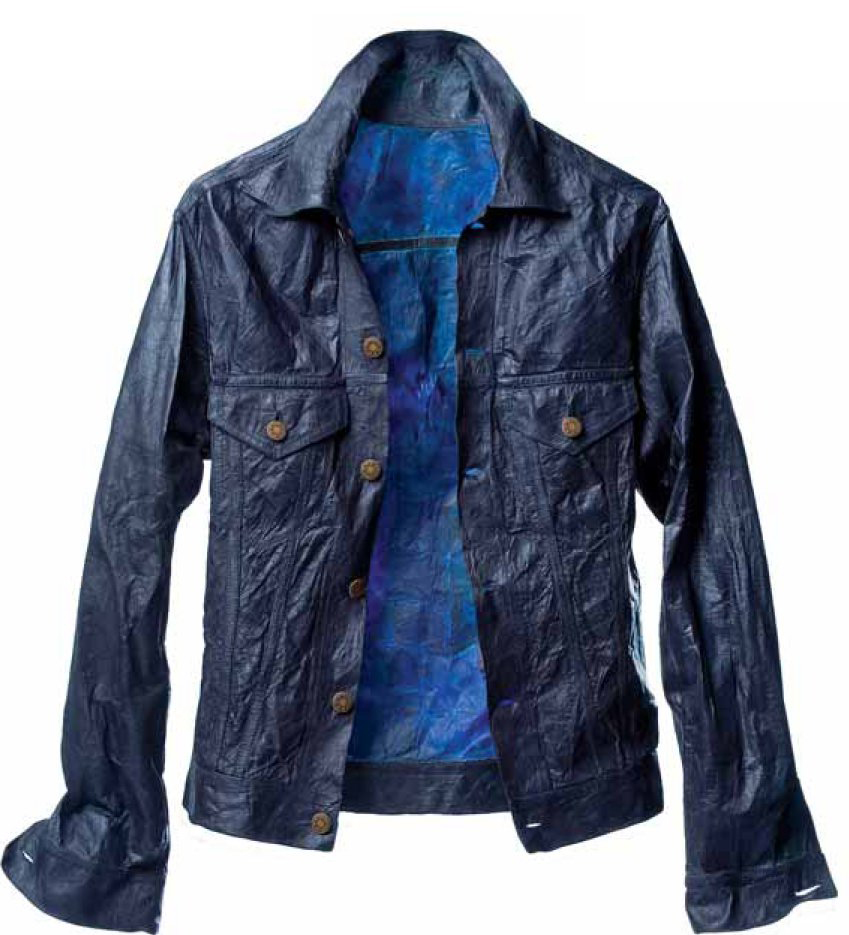OK, this is an unusual entry in a book about materials and design – after all, cellulose already appears several times in this book – but the reasons it is here are many. First, this particular case study highlights a completely new way in which designers are working with and looking at the formation of materials from which new products can be generated. In addition, it is a project instigated by a fashion designer, Suzanne Lee, who pioneered the use of bacterial cellulose as the basis for growing textiles. Finally, it is a discovery and application of a material that has deservedly gained much attention.
The jacket illustrated here is made from pure cellulose fibres but, unlike cellulose from plants (see the feature on cellulose, page 56), this cellulose was produced by bacteria grown in bathtubs of kombucha tea leaves. As the bacteria digest the sugar in the tea, they spin a layer of pure cellulose, which after two to three weeks – the length of time determines the thickness of the final material – results in a translucent skin, which can then be lifted from the bath, harvested and moulded into shape.
However, it’s not just the story of the material that is harvested on the surface of a liquid that is compelling, but also the story of its instigation by a fashion designer rather than a chemist or engineer. I call Suzanne and her design associates ‘new materialogists’, a term that encapsulates a growing group of people from the creative industries who are developing new materials.
Image: BioCouture Jacket by Suzanne Lee

•Non-toxic
•Compostable
•Controlled thickness
•Fruit and vegetables used to create colour
•Antimicrobial
•No waste formed during production
•Single-step production
•Compelling consumer story
•Not currently waterproof
Cost/Sources
BioCouture is still in the developmental phase and not commercially available.
Sustainability issues
Clearly this is a material and production proposal that has sustainability in its soul: It is an alternative to conventional, highly thirsty plants, such as cotton, is compostable and can even be grown from waste.
Production
One of the key aspects of this project is that, unlike other forms of production, which involve a material being extracted, produced into fibres, granules, sheets, etc., and then formed through a separate process, BioCouture allows the material to be grown and formed in the same step.
Typical applications
Suzanne Lee: ‘One day it might be possible to produce bacterial cellulose in a huge array of different forms, feels and colours. In the future we could find ourselves surrounded by bacterial cellulose – in our clothes, our books and magazines, our cars, our buildings… the possibilities are almost endless!’
| + | – |
|
–Can be simultaneously grown and formed –Completely sustainable and non toxic |
–Still in development so not commercially available –Not yet waterproof |
